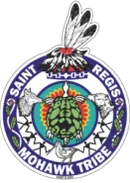-
Community & Family Services
- Care Management Program
- Child Support Enforcement Unit
- Family Support
- HCBS Waiver
- Home Improvement Supplement Program (HIP)
- Homeowner's Assistance Fund
- Individual Residential Alternatives (IRA)
- Individual Supports and Services (ISS) - Housing Subsidy Program
- Office of the Family Advocate
- Three Sisters Program
- Tribal Vocational Rehabilitation (TVR)
- Community Partnership Fund
- Economic Development
- Education
- Environment
- Executive Director's Office
- Finance
- Generations Park
- Grants & Contracts
-
Health Services
- A/CDP Outpatient
- A/CDP Prevention
- Partridge House (Inpatient)
- Ronthahiiohsthá:ke Clubhouse
- Business Office
- Centering Pregnancy
- Dental Clinic
- Health Promotion and Planning
- Laboratory
- Let's Get Healthy - Diabetes Center for Excellence
- Medical Clinic
- Mental Health - Kanikonri:ihne (Good Mind Counseling)
- Outreach Chronic Care Nursing
- Pharmacy
- School-Based Health Center
- Home Improvement Supplement Program (HIP)
- Human Resources
- Office for the Aging
- Office of Emergency Management and Safety
- Planning and Infrastructure
- Social Services Division
- Tribal Historic Preservation Office
- Tribal Police
Since 1980, EPA's Superfund program has helped protect human health and the environment by managing the cleanup of the nation's worst hazardous waste sites and responding to local and nationally significant environmental emergencies. In the late 1970s, toxic waste dumps received national attention when the public learned about the risks to human health and the environment posed by contaminated sites. In response, Congress established the Comprehensive Environmental Response, Compensation and Liability Act (CERCLA) in 1980. CERCLA is informally called Superfund. CERCLA is responsible for both Short-term and Long-term remedial response actions.
The Mohawk Territory at Akwesasne is downstream of three Superfund sites that were placed on the National Priority List (NPL) in the early 1990s; Arconic (ALCOA) Grasse River, General Motors (RACER) and Reynolds Metals Superfund sites. SRMT Environment Division has a seat at the decision-making table and provides oversight that ensures cleanup plans are followed and air and water monitoring is conducted to make sure no contaminants are leaking out threatening the environment or community members.

